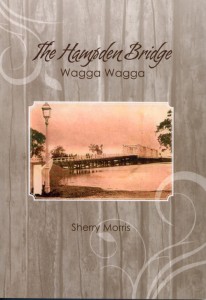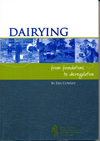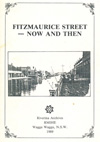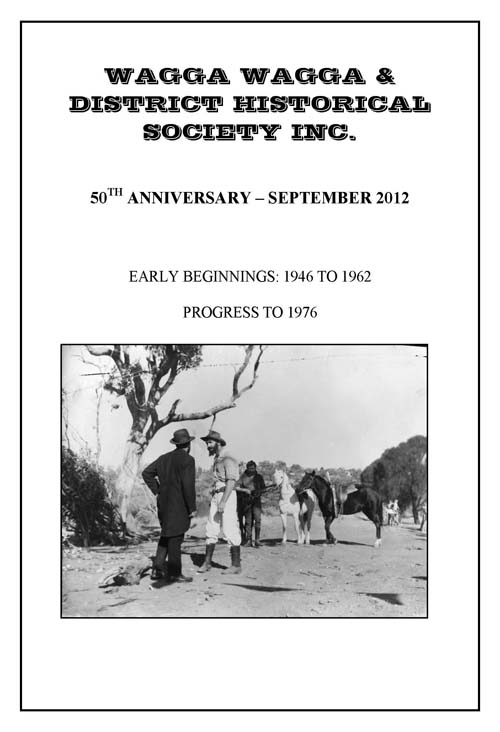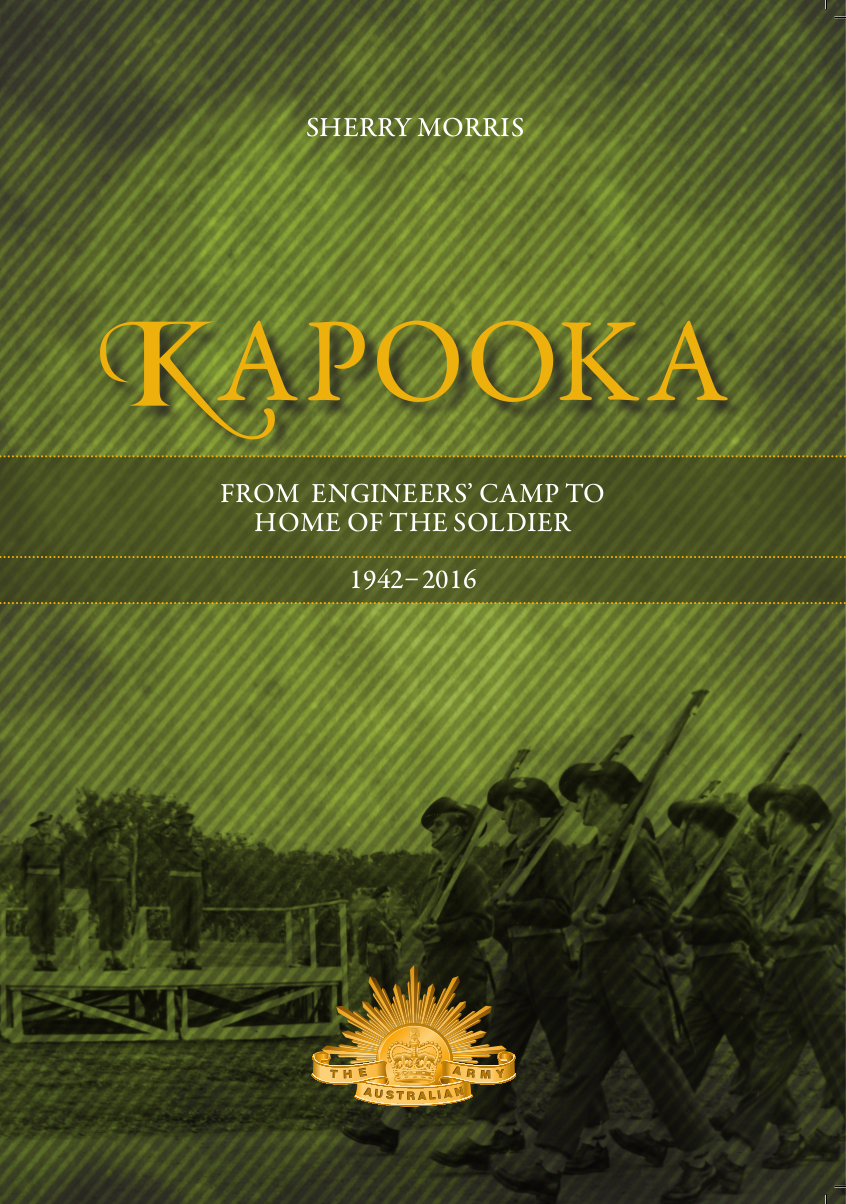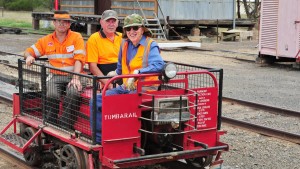The WWDHS has a small number of publications for sale.
It is hoped to expand the volume of material available, over time.
Please submit an enquiry by clicking on the following link Enquiry
Books.
Prices quoted do not include postage and handling, which will be confirmed by email once details of the order are known.
The Hampden Bridge – by Sherry Morris
Cost: $20.00 [plus postage & handling]
Weight: 285 grams
Dimensions: 250 x 175 x 7 (mm)
The definitive history of this historic Percy Allan designed bridge, which the Wagga Wagga City Council has resolved to demolish.
Officially opened in November 1895 and closed to traffic 100 years later in October 1995.
Sherry documents the history of this, and other river crossings (earlier and later) over the Murrumbidgee at Wagga Wagga, along with interesting stories connected to the Hampden Bridge.
The book includes some 100 photos, making it a most attractive item, and an important record of an historic Wagga Wagga icon that may soon disappear.
Dairying – from foundations to deregulation.
By Des Cowley.
Cost: $30.00 [plus postage & handling]
Weight: 865 grams
The humble dairy cow has been a vital component of the settlement of this country. But who laid down the dairying foundations in this area?
How did the industry rise from a few homestead cows to an everyday part of our staple diet?
What has been the effect of deregulation of the industry in NSW?
For the first time a history of dairying from Hay to Yass, Tumbarumba to Young; from the first fleet to the present day has been clearly presented in this extensively researched book.
Dairying from Foundations to Deregulation has been published by the Wagga Wagga and District Historical Society Inc. It contains 200 pages including just on 180 photos. Also includes a comprehensive index, map covered and much detail about the close association with the dairy industry.
“While this excellent book concentrates on the developments in NSW, from my experience it is typical of all States”
Laurie Muller ‘Australian Dairy Foods, June 2007’ (former Chief Dairy Scientist CSIRO).
Fitzmaurice Street – Now & Then.
By Jill Harris
Cost: $2.00 [plus postage & handling]
Weight: 90 grams
Wagga Wagga & District Historical Society – 50th Anniversary: Early Beginings, 1946-1962
By Geoff Burch
Cost $5.00 [plus postage & handling]
Weight: 150 grams
Dimensions: 297 x 210 x 5 (mm)
The Society’s 50th Anniversary Dinner was held in the Pacific Lounge of the RSL Club on Saturday 15th September 2012.
To commemorate the occassion a booklet, titled, “Wagga Wagga & District Historical Society – 50th Anniversary: Early Beginings, 1946-1962” was released at the dinner and there are a limited number of copies available for members and other interested persons.
The book contains some 45 pages of information tracing the early history of the Society up until 1976.
KAPOOKA: 1942-2016: From Engineer’s Camp to Home of the Soldier. by Sherry Morris
Cost: Available in soft cover ($50) or limited edition hard cover ($80). [plus postage & handling]
Weight: 1.2 kg
Dimensions: 305 x 220 x 25 (mm)
Kapooka is an integral part of Wagga Wagga’s history and culture and a book on its history is long overdue. Who better to do so than Sherry who has written over thirty books and numerous articles for journals and newspapers, thematic histories and heritage studies, and whose talents were recognised with the NSW Premier’s Regional and Community History prize for her excellence in historical research, writing and presentation of, “Wagga Wagga: A History”, in November 2000.
The Kapooka Military Area is located on almost 2000 hectares on the slopes of Pomingalarna, about ten kilometres south west of Wagga Wagga in southern NSW.
It was established during the Second World War as the General Headquarters of the Royal Australian Engineer Training Centre (RAETC). It was named ‘Kapooka’, an Anglicisation of the Wiradjuri word, ‘Gabuga’, meaning ‘eggs’, so named because it was a place where emus went to lay their eggs.
Kapooka remained a military base, except for a brief period after the Second World War, when it was acquired by the Department of Immigration to use as a Migrant Centre. After the Army’s return to Kapooka in 1951 it became the basic recruit-training centre of Australia where all recruits did their initial training before they were posted to their specialized units. It was subsequently known as ‘The Home of the Soldier’.
Kapooka: From Engineers’ Camp to Home of the Soldier by Sherry Morris provides an interesting, thoroughly researched and well documented record of Kapooka’s history from its establishment as an engineer camp during the Second World War until the current date (2016). In particular, it concentrates on improvements in accommodation, amenities and training, the changing role of women and Kapooka’s relationship with the Wagga Wagga community. The book also includes a chapter on the history of the site and its first inhabitants, the Wiradjuri people, and a chapter on the devastating explosion at Kapooka which killed twenty-six young men in May 1945 in the worst training accident in the history of the Australian Army.
The book contains 198 pages, over 200 photographs and 13 maps and diagrams.
